It’s a warm, humid weekday afternoon in north-west Bristol.
As steam rises from the brown grass on the historic Durdham Down after a brief downpour, the iconic 12-sided concrete water tower comes into view, followed by Georgian shops at the summit of Whiteladies Road.
Around the huge parkland are the wealthy suburbs of Stoke Bishop, Redland and Sneyd Park, where many families have worked hard to afford homes that today command seven-figure price tags.
Joggers plod the well-trodden perimeter paths that lead them to the western edge of the park, where the cliff edge gives views over the River Avon and Isambard Brunel’s famous Clifton Suspension Bridge.
Steeped in history, the area, known locally as “The Downs”, was long used as common land for grazing, before, in 1861, it became part of the Victorian craze for park creation, with an Act established for it to be a place of “public resort and recreation”.
But today, more than 160 years on, it’s not football or kite-flying that’s making this park famous – it’s dozens of caravans and vans.
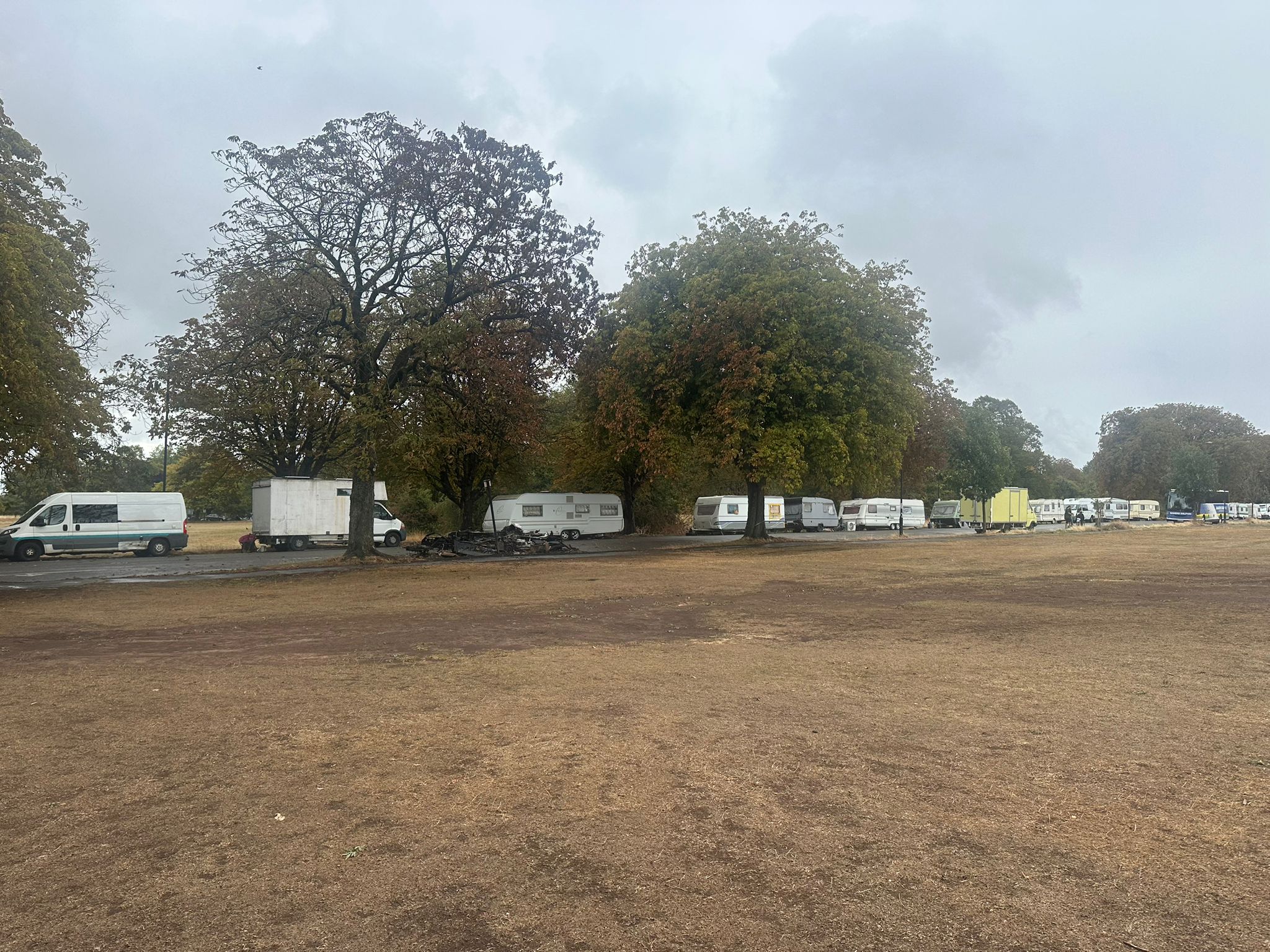
The rising number of vehicles and caravans on the roads that dissect the parkland has led some to dub the area “caravan city”, with tensions mounting between homeowners and van dwellers. The council, it appears, is stuck between the two.
The issue on The Downs represents a growing problem in a city with a housing crisis, with latest council estimates of between 640 to 680 lived-in vehicles and caravans.
Now, city leaders, faced with concerns over antisocial behaviour and crime, are taking action. Bosses are currently busy drawing up a policy to balance support for vehicle dwellers with the demands from the local community.
But speaking to those living in vehicles, there appears to be no easy answer.
“I believe I have a right to be here,” says Frankie Turton, who lives in a converted Ford Transit van decorated with flowery stickers.
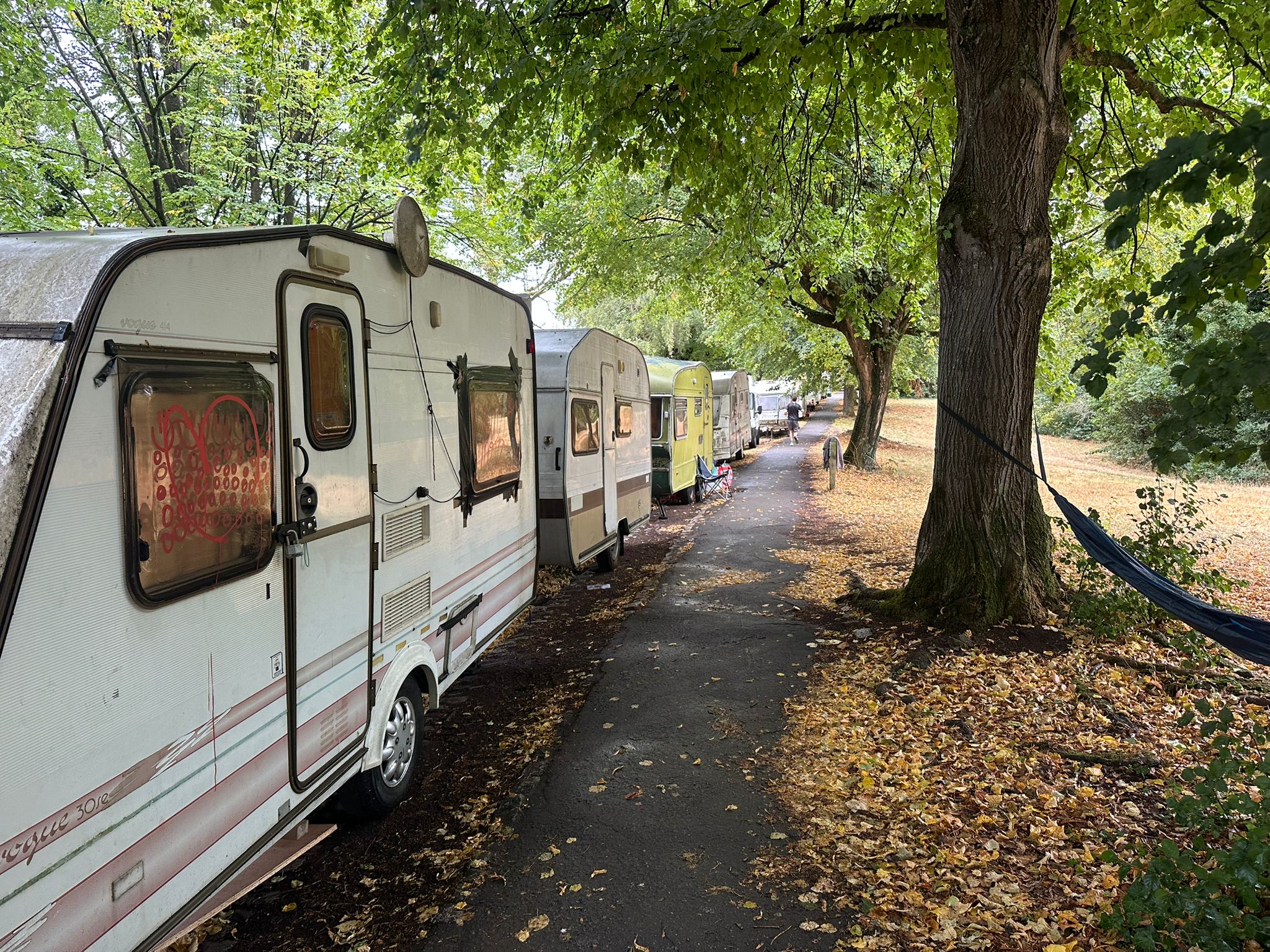
The 29-year-old women’s charity worker sold her house in Warrington to travel the UK with her partner, and when they turned up in Bristol two years ago, they decided to stay.
“We made like-minded friends and were surprised how easy it was to park up and stay here,” she says. “It felt like a big adjustment at first – people tell you van life is amazing but they don’t tell you about sh***ing in a bucket – but you can save money and have the freedom to go away on weekends.
“After arriving I got a job at a nearby pub. I’d heard of the complaints, and didn’t tell the locals I lived in a van. When I eventually did, they were like ‘we would never have known’.
“I understand some people’s concerns, but I think we need to stop generalising. People here are from all different backgrounds and for different reasons. Yes, I’m sure some do go to the toilet outside, but that’s only a minority.”
Ms Turton – whose van has a bed, kitchen, shower, sink and electricity supply – says she and her partner are in the process of buying a house in the city.
“I don’t particularly feel the tension with locals, but that’s maybe because we are moving away soon,” she adds. “It’s a complex situation and I don’t think there is a solution without restructuring society.”
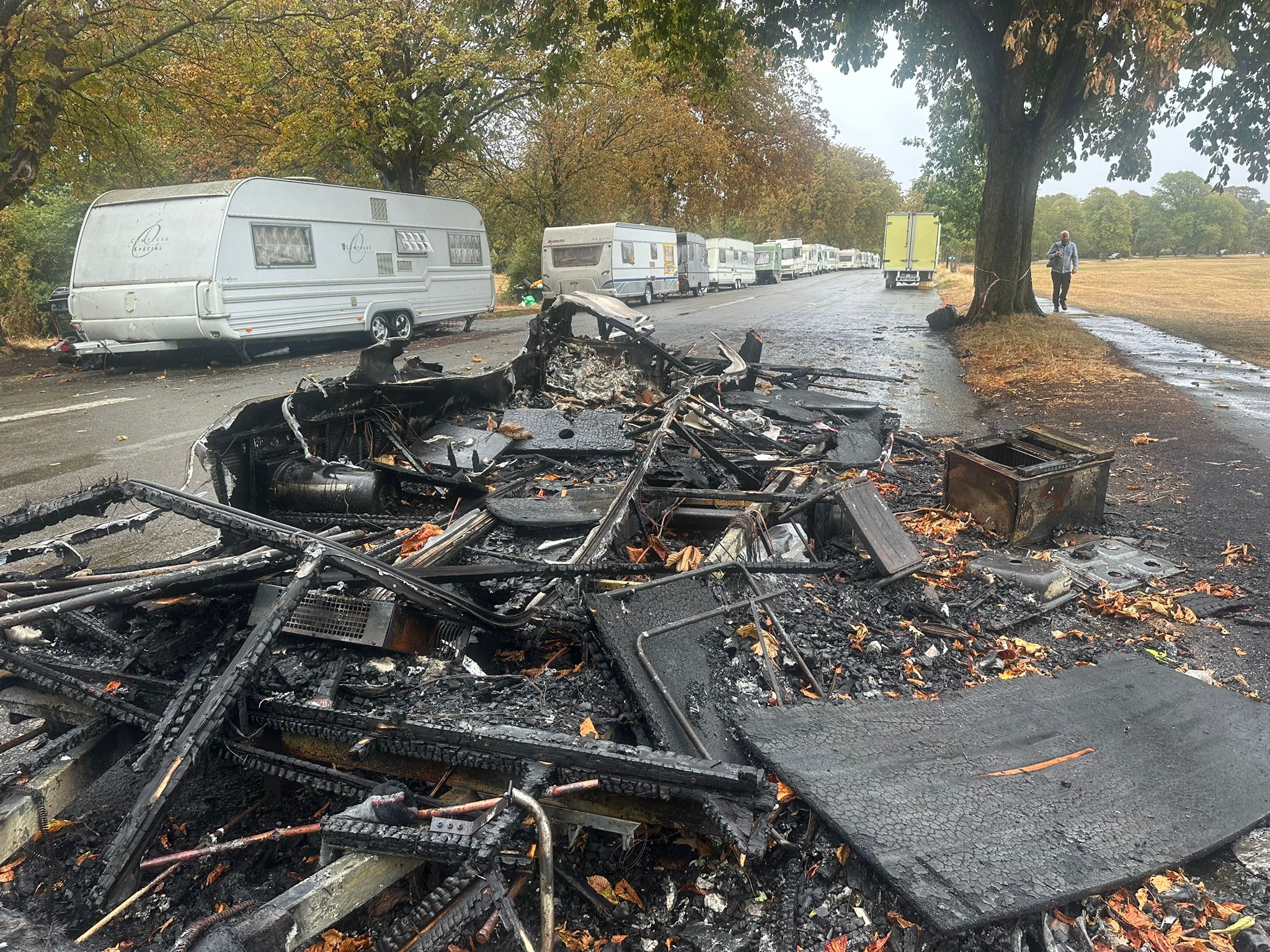
Many local residents are part of a campaign group called Protect the Downs, which recently presented a petition to the city council calling on it to “remove van-dwelling encampments”.
Campaigners say the park is not for people to live in vehicles, and claim there is evidence of sex offences, threatening behaviour and antisocial behaviour linked to the van dwellers. Some say they are too scared to go out at night, while others are unhappy over claims bushes are being used as open-air toilets.
Tensions have led to some altercations.
In June, while filming with the BBC, Tony Nelson, chairman of Protect the Downs, was reportedly pushed by a man from the van-dwelling community during an interview.
“People are being excluded from using the park because it is now thought the people living in vehicles have claimed the space,” Mr Nelson says. “It’s not right for anyone to be living in a residential street or a park and claiming it as their own space.
“Imagine your local park is used by people who feel they have a right to live in it. Would you want to take your family to that park?”
Last week, the Green Party-run city council wrote to housing secretary Angela Rayner asking for more funding to address the city-wide issue and build more social housing for “more options” for vehicle dwellers.
The city’s housing problem has worsened significantly since the Covid pandemic. More than 22,000 households are on the council waiting list, while housing rents increased by more than 23 per cent between 2020 and 2023.
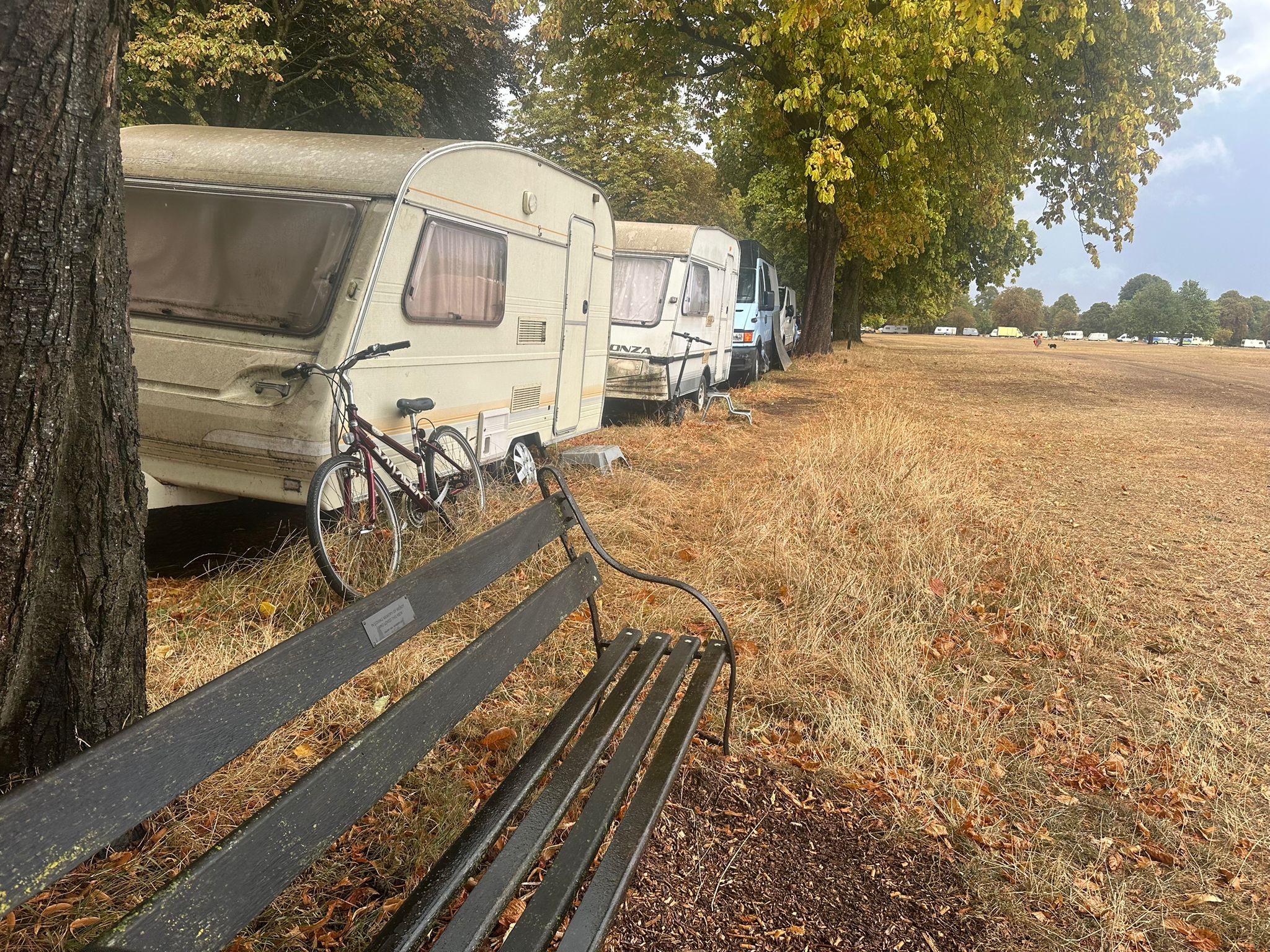
Green Party councillor Barry Parsons, who is in charge of housing, also wants greater powers to remove vehicles from council land, and a new requirement for caravans to have registrations of ownership, to help with enforcement.
“We have wrestled with this a lot,” he says, when asked if people should be able to live on vehicles on The Downs. “Where we have come to is we don’t think that living permanently in the same place on the kerbside in a vehicle is really a sustainable housing option for anybody.
“We don’t want to see long-term large encampments of vehicles by the highway, we recognise this for some people is something they choose to do and there is a lot of people who move around….. but we think that what our role is in this is rather than our focus being on getting rid of people is really providing people with options.”
Among the options are five meanwhile sites – temporary sites for van dwellers with access to toilets and running water – with two more planned to open soon. In total, there are 67 pitches across the sites available, and the council aims for 250 by the end of March next year.
People living in caravans question if this is the answer.
Friends Tyler Overall, 30, Kalvin Aisles, 27, and Anthony Owens, 29, have been living on The Downs for “several years”. Each has their own caravan, which they say they use as a living base for work at nearby breaker yards.
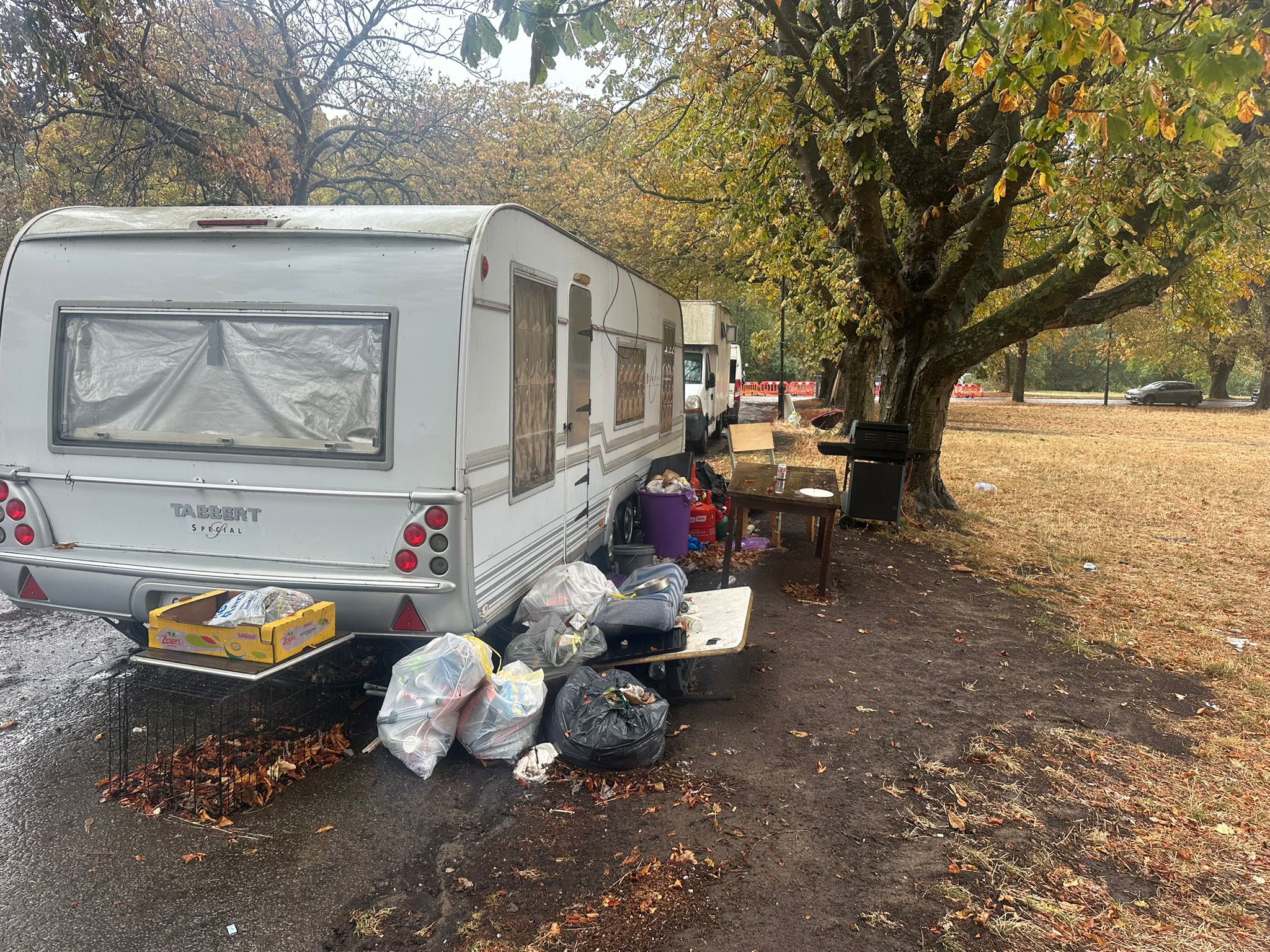
Sometimes they travel elsewhere for work, such as festivals, before returning.
“This is my lifestyle, no-one has the right to tell me stop,” says Mr Owens, whose caravan has a bicycle across its living area sofa inside. “We get grief from locals, we’ve had lots of shakers [people shaking the caravan], they are doing that because they don’t like us, they think we’re ugly, but this is my heritage.
“We are here because it is safer for us than being isolated on a roadside somewhere else in the city.”
He adds: “These meanwhile sites, they are a good idea, but there aren’t enough, so they [the council] can’t expect us all to disappear to one of them.”
On the other side of The Downs, in the shadow of rows of smart, Georgian houses is another line of caravans and vans – but also the remains of a torched caravan, set alight almost two weeks ago.
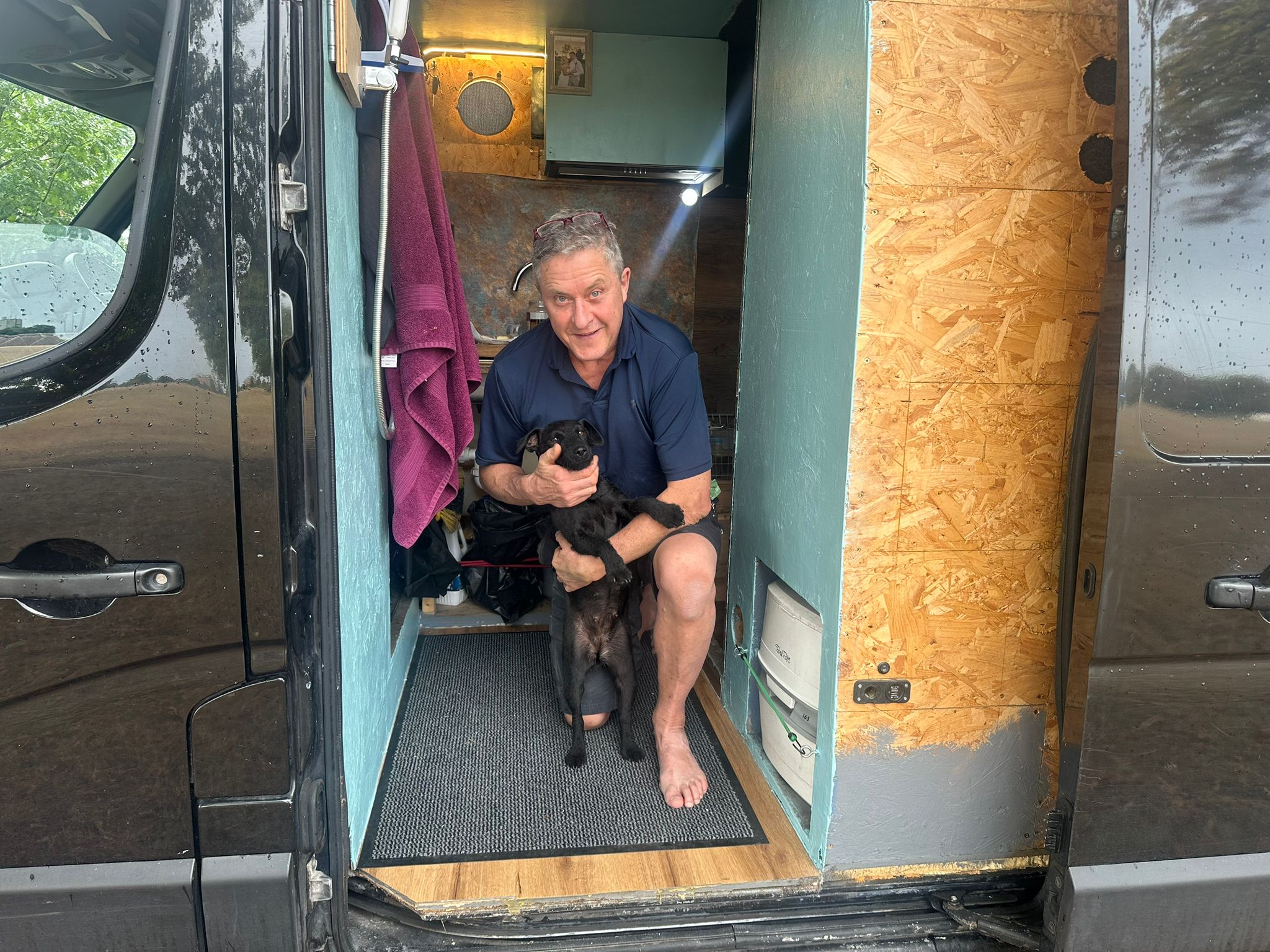
The wreckage of metal is undoubtedly an eyesore in the road.
Tim, who does not want to give his surname, lives in a van a few minutes’ walk away. He is a full-time plumber who decided to give up his £1,800-a-month house in the city, and convert his van into his home, where has lived for three years.
“It’s not a community here – you do get some problems, but it’d be unfair to paint everyone with same brush,” he says.
“I like living here, the freedom of the van and saving money. It’s not for everyone, van life, but it shouldn’t be something people look down on, want to push away. Most of us look after the area, it’d be nice if we all could live together in harmony.”
